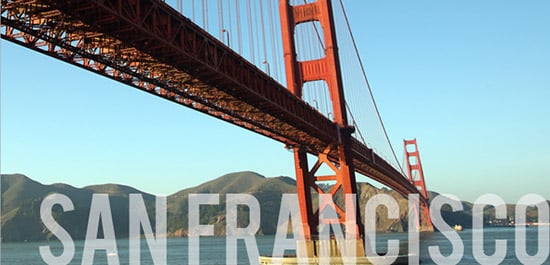Web designers develop, plan, and execute the look and functionality of websites and online pages by integrating a wide variety of media types. The work of a Web Designer may involve the development of an entirely new site or the mere modification of the look and feel of already existing pages. However, web designers are not primarily responsible for understanding the coding that drives their designs; rather, their primary responsibility is to ensure that visitors to the site have a pleasant experience. Also, web designers may use programming languages such as HTML, CSS, and JavaScript; they will use graphic design software such as Adobe Photoshop, Illustrator, and GIMP; and they will build prototypes and wireframes to test their designs. We’ll talk about website designers in general and the San Francisco company area in particular.
What Is a Website Designer?
A web designer is responsible for developing the look and feel of a website. A web designer’s primary responsibility is the aesthetic quality of a website. They make visual elements in design programs. Expertise in user interface (UI) design is common among web developers; this means that the sites they create are user-friendly and intuitive.
Web designers need to be able to create visually appealing sites, but they also need to be fluent in web technologies like HTML, CSS, and JavaScript. Because of this, they may make designs that are straightforward for web developers to implement. To ensure that their work is up-to-date and useful, web designers should also follow current design trends and use the most recent design technologies.
What Does a Web Designer Do?
Web designers are crucial in the process of developing a website that is aesthetically pleasing, simple to navigate, and available to any and all users. Because of their extensive knowledge of user experience, design concepts, and web technology, they are able to contribute to the success of a website. There are several reasons why web designers are essential to the success of a website:
- Accessibility: If you’re a web designer, you know how important it is to make sure your site works for everyone. This involves designing for a wide range of screen sizes, making the site accessible to users with disabilities, and optimizing for assistive devices.
- User Experience: Web designers also prioritize the user experience by crafting simple interfaces and well-thought-out structures for the site’s navigation. When users are able to swiftly and easily locate the content they require, they are more likely to stay engaged and make a purchase.
- Visual Appeal: A website’s layout, color scheme, typography, and images are all the work of web designers. Attracting and maintaining visitors and promoting the site owner’s message and brand are easier for visually appealing websites.
- Branding: The trust and trustworthiness of a website’s visitors can be increased with the assistance of the site’s web designer. Maintaining a consistent brand identity can also serve to set the website apart from its rivals.
Web Designer Job Description
While specific duties may differ from position to position, all of the following are typical of a Web designer’s work:
- Client Content Management System and Data Feed Integration
- Coordinating with other developers or web teams to enable seamless app-and-web functionality
- Using standard procedures in the web development industry and in terms of aesthetics and layout
- Setting up norms for visual presentation, such as in a style guide document
- Creating landing pages for websites that are interesting and mobile-friendly
- Making sure client websites’ visuals are consistent with their brand identities through design.
- Creating the most optimal user experience by testing and redesigning the website.
- Sites are being modified for speed and scalability.
- Developing unique website concepts in collaboration with customers
- Making sure that your website looks and works the same on desktop computers, smartphones, and tablets
- Making blueprints and displaying the site’s architecture
- Integrating brand features and data from market research conducted in collaboration with marketing and research teams
- Throughout the website’s development and launch, you’ll be responsible for providing support to both internal and external customers.
- Using tools like user flows, process flows, site maps, prototypes, and wireframes to convey design ideas.
- Integrating brand features and data from market research conducted in collaboration with marketing and research teams
- Creating color schemes and typefaces for sample documents
- Building in features and functions for websites.
Qualities of a Professional Web Designer
Despite the vastness of the industry, top Web Designers have a few traits in common besides their expertise. The top qualities of an excellent Designer include:
#1. Knowledge of the Field
A competent web designer will have built sites for businesses similar to yours before. This ensures that the expert has experience with your specific field and can provide advice on how to build the most effective website for your company. Although web designers’ levels of expertise will vary, anyone who has worked on even a single project for a business like yours will have a basic understanding of what you’re up against. Web designers that don’t know your area can help you develop a site, but planning and modifications will take longer.
#2. They Have a Plan and Stick To It
The best Web Designers can’t even begin to estimate how many websites they’ve built during their careers. As time went on, they established systematic procedures that have been continuously improved upon. That way, they’ll be able to spot potential problems early on and plan accordingly.
Time is a major consideration for every website development job, so that’s great to hear. Professional web designers provide clients with a written description of the procedures needed to construct a website.
If a web designer finds an issue that could delay the project, they should alert stakeholders promptly. Deadlines should never be missed, but if they are, professional Web designers will provide thorough justifications for any missed targets.
#3. They Are Adept at Conveying Their Ideas to Others
Professional web designers will communicate with their customers in a straightforward, jargon-free manner to explain the many web technologies and design options available to them.
Clients won’t have faith in Web designers to convey their message through design if they can’t explain complex ideas to them in person or via email.
As a web designer, you’ll collaborate with people from a wide range of fields, all of whom perform distinct but related tasks. In addition, all excellent Web designers must master the art of deftly navigating these interdependencies.
#4. Flexibility
Regardless of your chosen field of study in computer science, you will likely encounter unpredictability in the code. Web designers should be able to adjust the parameters of a project as needed. Those who work in web design should be flexible and ready to solve issues as they crop up.
When it comes to needing a website, the requirements and preferences of various businesses and individuals will vary. In addition, a competent designer should have no trouble catering to a wide range of client preferences.
#5. They Put Thought Into the Design and Prioritize User Experience
Understanding the design and how to make things aesthetically appealing, along with fundamental web design theory elements like color theory, structure, and user experience, are prerequisites for any aspiring Web Designer.
Whether or not the term “user experience” (UX) is included in a designer’s job description, it is becoming increasingly integral to the design process. Web designers can anticipate visitors’ wants and lead them through their experience by putting themselves in their shoes.
In order to make educated decisions about the design and structure of the site, Web Designers must make use of any user research and data analysis they have access to.
#6. Wide-Ranging Portfolio
It is acceptable to work with web designers who are just getting started. But there’s an element of risk involved. While fresh design talent certainly exists, it is often accompanied by a lack of expertise and a proven track record. Professionals with experience will have many work samples to display in their portfolios. As a result, you’ll have access to the designer’s portfolio in the form of a variety of links to their websites. You can choose a design that works for your company by looking at these samples of previous work.
#7. Competitive Pricing
The cost of a web designer’s services is something to think about. This is significant since there is a wide range in how much it costs to have a website designed, based on things like geography. Setting a budget before searching for the top designers can help you locate the greatest price. Having a firm financial goal in mind will help you focus on the web designers who are within your price range.
How Do Web Designers Compare to Other Occupations?
There are other technical roles that are similar to Web Designers in certain ways, such as
#1. Front-End Web Developer
A Front-End Web Developer, like a Web Designer, works on the client side of websites, but with a greater emphasis on the code, employing markup languages like JavaScript, HTML, and CSS to create such websites. A Front-End Web Developer is the person who typically puts the designs of a Web Designer into action. Again, there is a great deal of overlap between the roles, as many Web Designers also work frequently with HTML, CSS, and JavaScript, and a Front-End Web Developer typically provides feedback on the design.
#2. User Experience (UX) Designer
A user experience designer (UX Designer) is responsible for ensuring that all aspects of a website are easy to use by doing thorough user research and testing. The UX design team is typically integrated into a larger product team consisting of Web Developers, Product Managers, and data professionals. Being a user advocate and increasing usability are fundamental to UX design, but so is making the most of insights gleaned from in-depth studies of target audiences to further organizational objectives. Also, there is a direct correlation between web design and user experience design.
#3. Visual Designer
When a person visits a website, their eyes are first drawn to the aesthetics of the interface, including the buttons, icons, and backdrops. They may also be responsible for drafting a style guide to inform the rest of the company of the expected visual presentation of the site and for ensuring that all assets are properly resized for use on various devices, as well as for the production of email marketing items, presentation materials, and interactive event materials.
#4. User Interface (UI) Designer
The terms “user interface” and “user experience” are often interchanged. Designing a product’s user interface (such as a sitemap, layout, or menu) using UX design concepts. The style, feel, and functionality of the product’s interfaces are all part of the UI design. In addition to assuring compatibility with all browsers (even Internet Explorer! ), a UI designer’s responsibilities may extend to interaction design and other related fields.
How Much Does It Cost to Hire a Designer to Build a Website?
Due to the importance of the internet in today’s economic climate, web design is a growing field of expertise. Whether you’re starting from scratch with a brand new company or giving an existing one a facelift as part of a rebranding effort, you’ll need to familiarize yourself with the finer points of website development at some point.
While there are resources available to help the layperson make their own website, these templates may lack the customization options necessary to truly meet the needs of the user. In such a case, it is recommended to hire a web designer. But how much does it cost to have a website of your own, developed by a professional web designer, and outfitted with the latest in security and other bells and whistles?
Prices for web designers average $75/hr. The average annual cost of establishing, designing, developing, and populating a minimal business website is $6,760. This includes the cost of hosting the website and the cost of content creation. The client’s upkeep and education are figured into this total as well.
Website Designers San Francisco
In today’s world, a website is necessary for any company. Every business, from the one-person operation in the garage to the midsize corporation, needs a web presence. There are several reasons for creating a website, most of which have to do with advertising some kind of product, brand, or service. Among the many things they do is tell stories, advertise, teach, and sell. Corporate, electronic commerce, marketing, and portals were all names that came up.
Website design companies in San Francisco exist to fill the void left by business owners who want to focus on growing their companies’ earnings but don’t have the time or resources to devote to building a design team from the ground up. Here are some top website designers in San Francisco.
#1. Project6
Project6 is one of the branding and website designers serving San Francisco and the Bay Area’s educational, retail, solar, healthcare, and nonprofit sectors. It creates fully responsive websites for businesses using WordPress as its primary platform for development. It aids in developing a website’s aesthetic that accurately represents the character of the brands it represents. Esten Sesto, the man in charge of Project6, has worked in the field of usability, user interface design, and interactive technologies for over two decades. The National Sleep Foundation, Gordon and Betty Moore Foundation, and Stanford University are among its famous clientele.
#2. Clay
For those familiar with the area, you may recognize the city’s name, as it is the home of San Francisco. The company’s websites and mobile apps are designed with user engagement in mind using techniques from the field of behavioral psychology. Some additional offerings include product planning, brand identity, visual design, an innovation consultancy, and content creation (including copywriting, video, animation, and graphics). In addition to Facebook and Google, Clay counts Slack, Uber, Sony, and Coca-Cola among his clientele. The agency’s work has been recognized with a Webby Award nomination.
#3. jKoncept
Businesses in the San Francisco area can take advantage of jKoncept’s digital marketing services. In this way, both established inventors and new enterprises can boost their internet profiles. The company develops bespoke websites for businesses to showcase their wares and encourage visitors to make a purchase. Branding, product/UX design, and prototyping/research are all areas where this company excels. In addition to Fitbit, Ralph Lauren, and Google, jKoncept’s client list includes many more notable companies.
#4. Alamo Web Solutions
The creator of Alamo Web Solutions has been in the computer industry for almost twenty-five years. The company offers a wide range of web-related services, such as logo creation, custom layout design, responsive website design, SEO, and site maintenance. Affinity Wealth, KW Builders, Esin Restaurant & Bar, and Fire Protection Education are just some of the companies that have enlisted the company’s services. In addition, customers have lauded Alamo Web Solutions for its fair pricing and talented, resourceful employees.
#5. eSEOspace
Over the past few years, eSEOspace one of the top website designers and they have created more than 500 websites for local businesses in the San Francisco area. It builds sites with cPanel, Moz, and Salesforce, among other applications, and uses content management systems like Shopify and WordPress to make them accessible to people with disabilities. The firm provides marketing automation and integration services in addition to its SEO, CRM, and e-commerce setup services. They are also partners with Facebook Marketing and Google. Abushi, ICON Capital Group, and Kasper Homes are just a few of the companies that eSEOspace has helped with their web design.
#6. Jives Media
Jives Media is a San Francisco firm that serves local companies and nonprofits with professional web design. Its web designers prioritize developing functional, mobile-friendly, and aesthetically pleasing websites that will boost their clients’ companies’ online visibility. The business also provides social media marketing and management, Google Ads, search engine optimization, and pay-per-click advertising. Jives Media also offers one-on-one marketing advice and video marketing and production services.
Top Website Design Company
Hire San Francisco website designers to create a stunning site for your audience. Here are the top website design companies you might want to consider.
- Digital Silk
- Manta
- SmartSites
- The Bureau Of Small Projects
- Idea Grove
- eDesign Interactive
- BairesDev
- EuroART93
- NUOVA Digital
- Boldare
What Can Professional San Francisco Website Designers Do for You?
Why do you need a leading website design company in the San Francisco Bay Area? If you want to know more, read on!
#1. They Can Outcompete You in the Digital Sphere
Your website is the cornerstone of your online identity and typically serves as potential customers’ first impression of your company. Hiring a San Francisco web designers company is essential if you want to make a great first impression and establish a lasting online presence for your organization. Also, read WEB MARKETING: Examples, and Best Strategies.
A website design company in the Bay Area can assist you regardless of whether you need to start from scratch or have an existing website that needs updating.
#2. You Can Boost Sales With Your Website
In particular, an e-commerce company can gain a lot from working with a San Francisco website design company. Why? The layout of your website has the potential to boost sales.
Users may abandon your site before ever seeing its products and services if they find it difficult to navigate, disorganized, or aesthetically unpleasant. What that means for business is bad news.
Hiring a professional San Francisco website design company can help your business achieve your goals of attracting more visitors, keeping them on the site longer, and ultimately making a purchase.
#3. Doing It by Yourself Is Challenging
It’s not easy to make anything that looks good and works well on the web if you don’t have any training in web design.
In addition, you must prioritize running your firm and delegate marketing tasks to experts. A professionally designed and highly functional website is yours for the taking when you work with a San Francisco web design company.
How Do I Find the Best Website Designers in San Francisco?
There are many excellent San Francisco website designers on our list; how do you choose the one that is best for you? Please consider our advice.
#1. Check Out Their Previous Work
Reviewing a company’s portfolio might help you determine if its aesthetic aligns with your own.
Don’t be hesitant to check over the work of other San Francisco web design companies to find one whose aesthetic best suits your company’s needs.
Even while most agencies will adapt to your brand’s aesthetic, it’s still a good idea to review some of their previous work. If a web design company in the Bay Area has a wide range of portfolio examples, that’s a good clue that they can accommodate a variety of brand styles and voices.
#2. Explore Their Other Products
After hiring a San Francisco website design company, it’s important to think about different forms of advertising to boost the website’s visibility online. It’s doubtful that people will visit your site if you don’t employ marketing tactics like search engine optimization (SEO) and pay-per-click advertising (PPC).
You should look for a website design company in the Bay Area that also provides services in other areas of marketing that may pique your interest.
Also, hiring a single firm to handle all of your online marketing needs is the best way to ensure that your efforts are consistent and are working together to achieve your goals.
#3. Examine the Prices That They’re Charging
The company’s financial plan is crucial. Overspending can put a corporation in a financial bind. This is why you should always check an agency’s rates before signing a contract with them.
However, pricing information may be easily accessed online from the best web design firms in the San Francisco Bay Area. Another great indicator of an open and honest business.
Companies who don’t disclose their rates are likely to hit you with additional costs once you sign on the dotted line. Choose a web design company in the Bay Area whose rates are easily accessible online so you can stick to your web design budget.
What’s the Difference Between a Web Developer and a Web Designer?
Although their roles are distinct, web designers and developers collaborate to build and update websites that satisfy all of a site’s users.
The goal of a website’s user experience, color scheme, graphic style, and even its content can all be influenced by the work of a web designer. Also, the site’s creators must have had a good reason for choosing the name they did.
Website developers are the people responsible for turning a designer’s sketches into working code. The developer may propose alterations to the site in order to improve its functionality and make use of new features. They check that the site is compatible with various browsers and mobile platforms and figure out how to keep it safe.
Conclusion
In conclusion, San Francisco attracts the best and brightest from all fields because of its reputation as an international center for innovation.
It’s safe to assume, then, that San Francisco’s website design companies are staffed by the kind of highly educated individuals that can deliver services that can compete on a global scale. These distinguishing characteristics of San Francisco’s website designers set them apart from their contemporaries.
Website Designers San Francisco FAQs
Who Designs and Builds Websites?
A website’s visual design, user experience, and functionality are all the work of web designers. A web developer creates and maintains a website’s skeleton. To be successful in this field, one needs to be both artistically gifted and technically proficient.
Can I Hire Someone to Design My Website?
Yes, you can hire someone to design your website. In most cases, having a professional build your website will cost you more than if you did it yourself. Prices range from $400 to $1,000 for a basic “brochure-style” website to promote your business’s offerings online. That number increases to an average of $2,000-$5,000 for a modest online shop.
Similar Article
- San Francisco 49ers Logo: What Does it Represent?
- FREELANCE GRAPHIC DESIGNER: Definition, Salary, Resume & Work
- MOST EXPENSIVE PLACES TO LIVE IN US: Top 20+ Places In 2023
- WEB MARKETING SEO: Meaning, Advantages & Types.
- MAIL FORMAT: 5 Best Professional Email Writing Format and Examples






